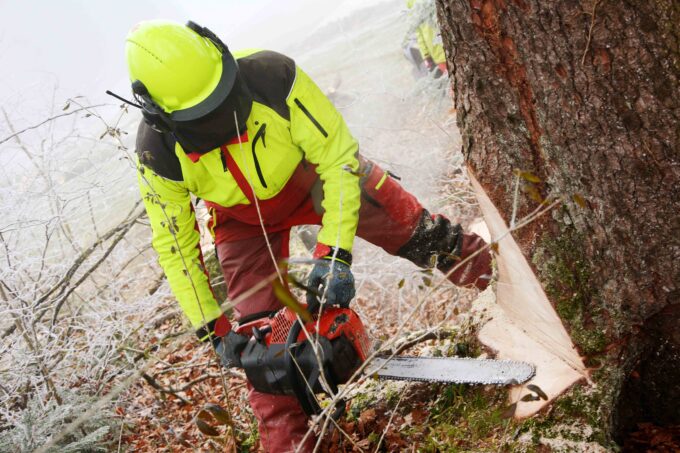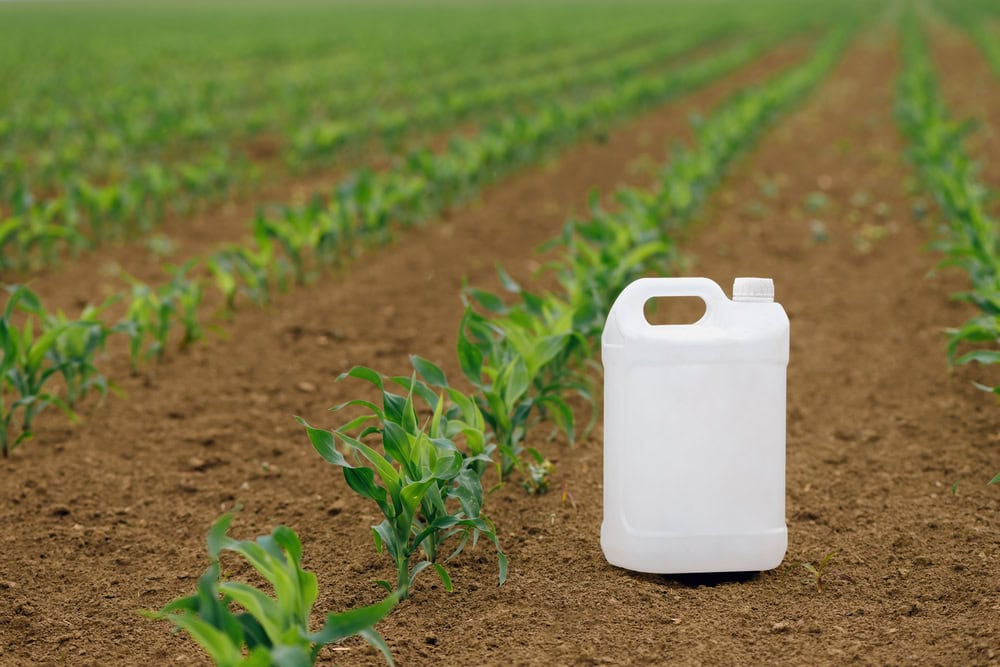Logging with a bite: Tips for the safe use of chainsaws
The chainsaw is an indispensable tool in timber harvesting. In addition to the necessary training, safe working practices and PPE, thorough maintenance is also essential for safe and efficient work. Now is the time to check chainsaws and get them in shape.

And these are the main dangers: A saw chain reaches a speed of up to 20 meters per second (= 80 km/h). The main dangers when using chainsaws are cuts to the legs and feet, eye injuries from ejected parts, back problems due to unergonomic postures and damage to health from noise, vibrations or exhaust fumes.
If sawing with the point of the sword, there is a risk that the saw will be thrown back with great force and cause serious injuries to the face or shoulder area, a so-called "kick-back". Therefore, cutting with the tip of the blade should be avoided; plunge cuts should only be carried out with appropriate training and a suitable technique. The risk can also be minimized with well-tensioned, sharpened saw chains, correctly adjusted depth limiters or the use of special safety chains ("low-kick-back").
With the exception of lower noise emissions and no exhaust fumes, the dangers of a cordless chainsaw are the same as those of a chainsaw.
Comply with safety rules
Chainsaws are work equipment with special hazards - appropriate training is therefore required for their use: For wood harvesting and maintenance work, you can acquire the necessary specialist knowledge in a ten-day woodworking course. For all other applications, a chainsaw handling course lasting 1-2 days is recommended.
Safe use always includes intact, functional PPE, consisting of at least:
- Cut protection trousers
- Helmet with mesh visor
- Hearing protection
- sturdy shoes
- Gloves
Signal-colored work clothing must be worn during timber harvesting work. The wearing of special forest safety shoes with protective toecaps and cut protection inserts is recommended.
When working with chainsaws, a safety distance of two meters from other persons must be maintained. When harvesting wood, the danger and fall zone must be observed depending on the size of the tree and its position.
The use of low-emission gasoline (alkylate gasoline) is recommended for refueling. Only electric chainsaws should be used indoors. Chainsaws should not be used above shoulder height.
Check safety elements regularly
To prevent serious injury from the chainsaw, it is equipped with various safety elements. These can only perform their protective function if they are working properly. The safety elements should therefore be checked before each use. The most important ones include
- Chain brake with hand guard: It stops the chain when the saw kicks back. Check: Trigger the chain brake with the back of your hand while the saw is running - the chain must stop immediately.
- Throttle lever lock: This prevents unintentional operation of the throttle lever. Check: The throttle lever may only be operated when the throttle lever lock is fully depressed.
- Chain catch pin: It prevents the saw chain from jumping off in an uncontrolled manner if the chain breaks or comes loose. Check: Must be firmly mounted and intact.
- Chain guard: It protects against cutting injuries and damage to the saw chain during transportation. Check: Only use intact chain guards.
Maintenance and upkeep
Regular maintenance is essential to extend the service life of the chainsaw and ensure its safe use. Important points here are:
- Chain maintenance: Regular cleaning and correct sharpening enable precise and safe cuts.
- Chain tension: Check the correct tension - a chain that is too loose can jump out, while one that is too tight can overload the saw.
- Air filter and spark plug: Check and clean or replace at regular intervals.
- Fuels and chain oil: Use the correct products to prevent damage to the engine. When refueling chainsaws, always top up the chain oil at the same time. Do not forget to check the chain oil on cordless machines!
- General inspection: Check the entire saw regularly for wear and damage.
Source: Advice center for accident prevention in agriculture (BUL)









